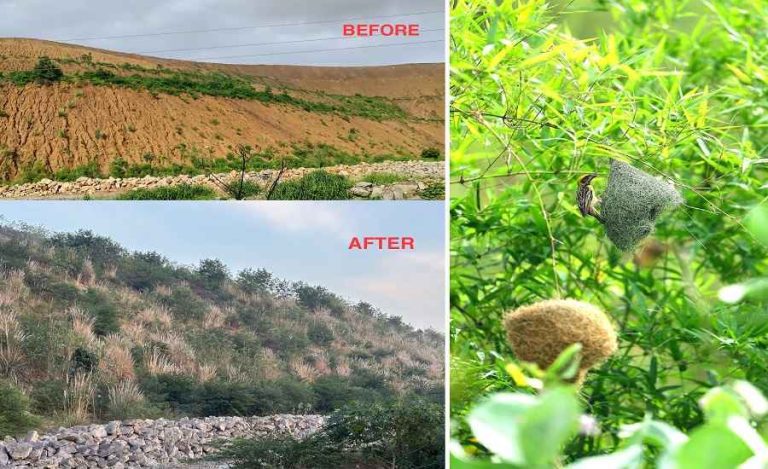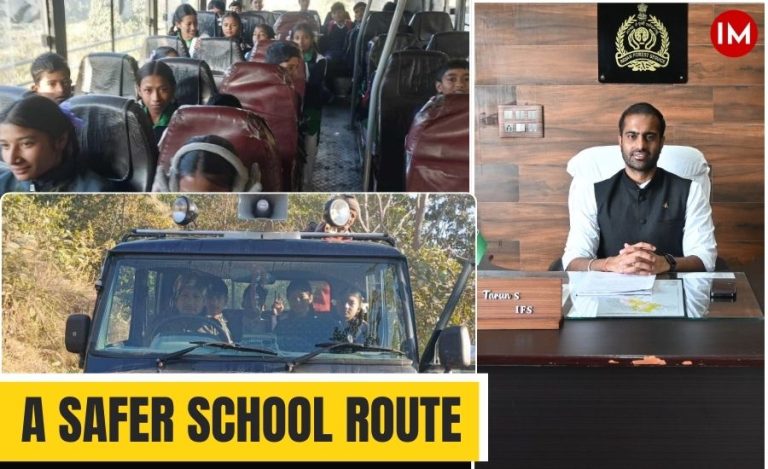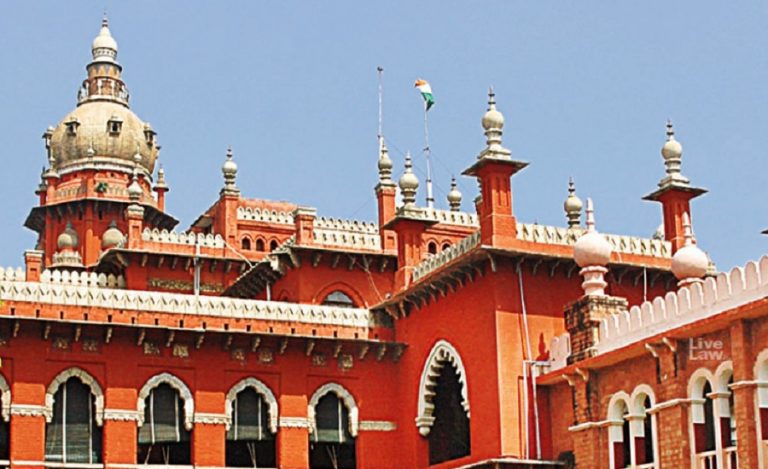Snow leopards, often referred to as the “ghosts of the mountains” for their elusive nature, inhabit some of the most rugged and remote landscapes on earth. Adapting to the icy slopes of High Asia, this enigmatic big cat, scientifically known as Panthera uncia, roams across a unique and fragile ecosystem that spans the Trans-Himalayan region. With the release of a landmark report estimating a population of 36 snow leopards in Arunachal Pradesh, India, a new chapter has opened for conservationists and wildlife enthusiasts alike.
“For the first time in history, the Department of Environment, Forests, and Climate Change, Arunachal Pradesh, with the funding support of MoEF&CC and with the technical support of WWF-India, initiated this pioneering project to assess the population of snow leopards in the year 2021,” Dr. Damodhar A.T., IFS, who is the Conservator of Forests (Wildlife & Biodiversity) and Director, Biosphere Reserves, Govt. of Arunachal Pradesh (AGMUT, 2010 Batch), told Indian Masterminds.

FIRST SCIENTIFIC ESTIMATE
In 2021, the Department of Environment, Forests, and Climate Change (DoEFCC) of Arunachal Pradesh, in partnership with WWF-India, conducted a comprehensive study of snow leopards. This ambitious project marked the first scientifically robust attempt to estimate the population and density of snow leopards across Arunachal Pradesh’s vast mountainous terrain. The study, which ran from June to December 2021, involved state-of-the-art camera trapping, community interviews, and rigorous statistical models to establish an accurate population estimate. The findings were profound: 36 snow leopards now roam the high-altitude areas of Arunachal Pradesh, with a density of approximately 0.26 leopards per 100 square kilometers, providing a new foundation for conservation efforts in the state.
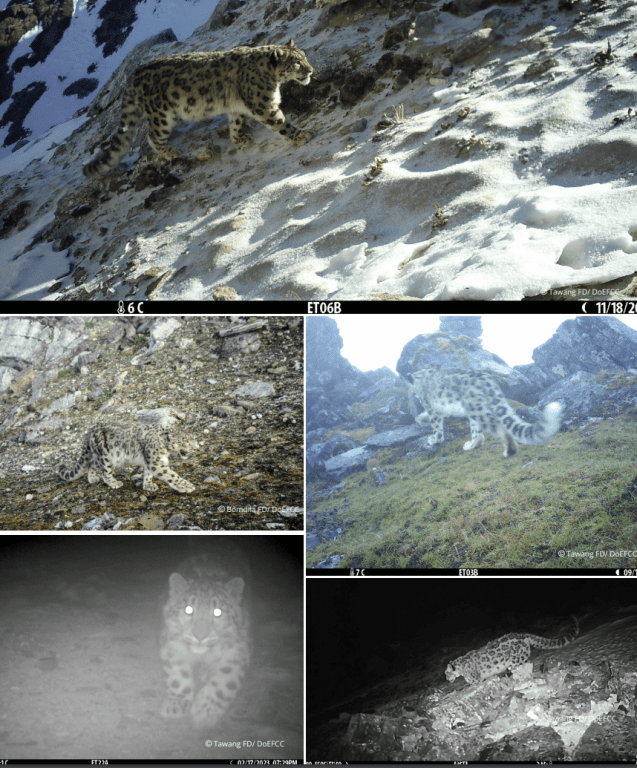
A UNIQUE CHALLENGE IN CONSERVATION RESEARCH
Surveying snow leopards in Arunachal Pradesh posed numerous challenges. Unlike other regions where snow leopard habitats are relatively accessible, Arunachal’s high-altitude areas are notoriously difficult to navigate due to steep terrains, dense vegetation, and limited infrastructure. Field researchers covered 115 locations across the state and conducted over 8,775 “trap nights” using camera traps to record the elusive cats in their natural habitat. These traps captured individual snow leopards 40 times, primarily in the Tawang and Bomdila Divisions, allowing for a more accurate count and understanding of their distribution. Additionally, interviews were conducted with 282 herders, ex-hunters, and other community members across 160 locations, which helped identify local perspectives on wildlife and highlighted the threats facing snow leopards.

“This was a Herculean task with extremely tough challenges to reach inaccessible high-altitude snow-peaked mountains to set up camera traps for collection and capturing of footage. Hats off to our dedicated and most committed frontline staff under the dynamic leadership of Mr. Millo Tasser, the then Conservator of Forests and Wildlife at the Headquarters, who could complete this exercise,” the officer further added.
THE HIGH-ALPINE HABITAT OF AP
Arunachal Pradesh’s potential snow leopard habitat covers approximately 15,000 square kilometers, making it one of the largest contiguous high-altitude landscapes in the Eastern Himalayas. The snow leopard is not just the apex predator of this ecosystem but also holds deep cultural and spiritual significance for the communities that share its habitat. For many indigenous tribes in the region, big cats like the snow leopard are considered totemic symbols. Many tribes uphold strict taboos against hunting carnivores, reinforcing the spiritual and ecological importance of these majestic animals.
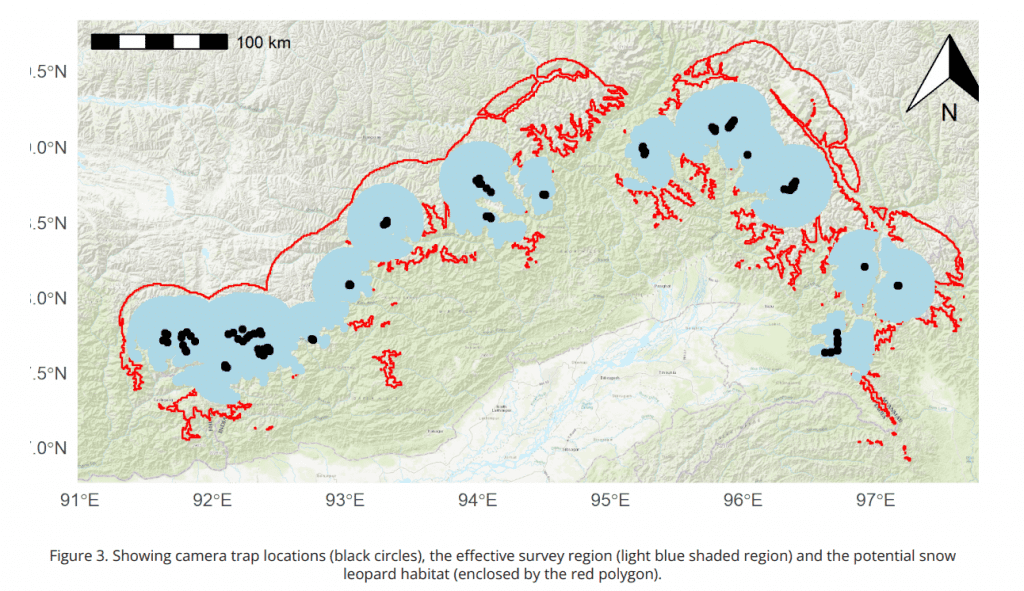
These high-altitude areas are also home to a range of unique and endemic species, including rare ungulates like the red goral and elusive creatures such as the sun bear. Snow leopards, known for their mastery of camouflage, can silently navigate this terrain, often going unseen. For centuries, this ability to vanish into the landscape has earned them the nickname “ghost of the mountains.”
A COMPLEX WEB OF THREATS
Despite their remote habitat, snow leopards face numerous threats. Accidental killing and snaring represent the most significant risks across the surveyed districts, while retaliatory killings due to livestock predation are prevalent in Tawang and West Kameng. The encroachment of infrastructure, such as roads and power projects, into previously untouched habitats has further fragmented their environment, increasing the risk of human-wildlife conflict and reducing the availability of prey species.
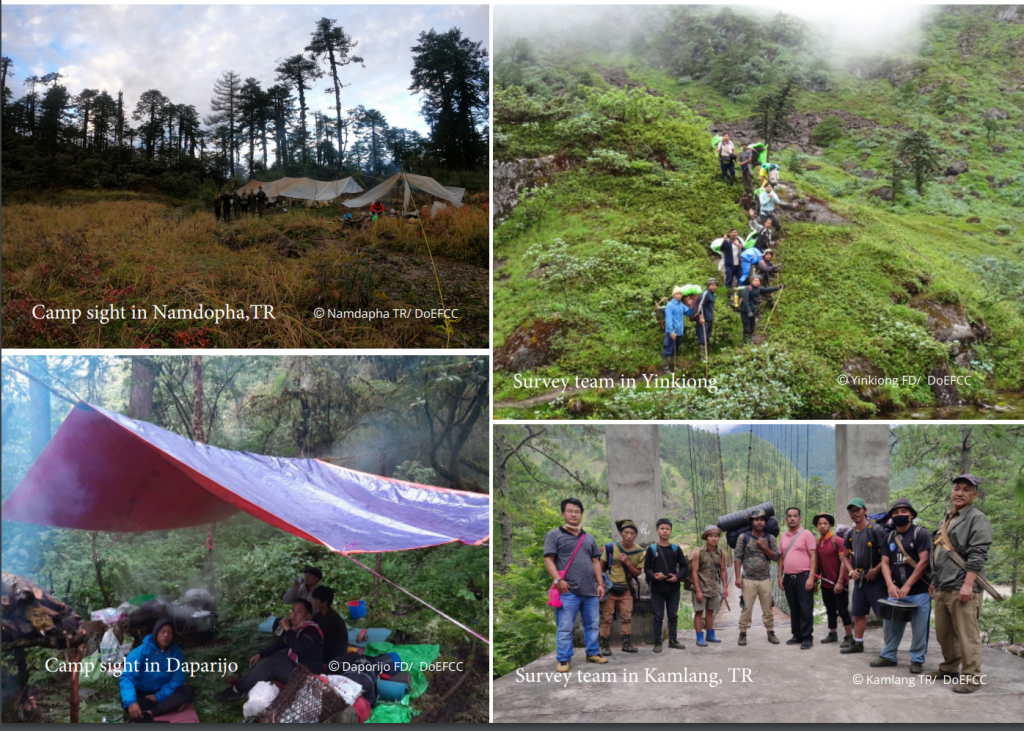
An emerging and complex threat to snow leopards in the region is the presence of free-ranging domestic dogs. These dogs, often used by herders, pose a significant danger to both snow leopards and other high-altitude wildlife, as they can carry diseases and compete for food. The increased presence of livestock has also led to resource competition, further straining the delicate balance of this ecosystem.
Climate change is an overarching concern, altering the delicate environmental conditions that snow leopards and other high-altitude species depend on. The shrinking snowline and changing vegetation patterns are affecting the availability of prey, forcing snow leopards to venture closer to human settlements in search of food.
PROJECT SNOW LEOPARD AND LOCALS
In response to the mounting threats facing snow leopards, India launched Project Snow Leopard in 2008, a flagship conservation initiative aimed at protecting high-altitude ecosystems and species through community involvement and sustainable policies. Recognising the interconnectedness of local cultures and livelihoods with these ecosystems, the project emphasises the importance of a participatory approach, involving local communities as stewards of the landscape.
Arunachal Pradesh’s conservation efforts offer an exemplary model of community-driven action. The recent survey revealed a high level of awareness and respect for snow leopards among the indigenous communities. Over 80% of interviewees confirmed the presence of snow leopards, and nearly all expressed support for their protection. The insights gathered from local herders and ex-hunters underscore an opportunity for increased collaboration between conservationists and the community—a prospect that Arunachal Pradesh is already embracing.
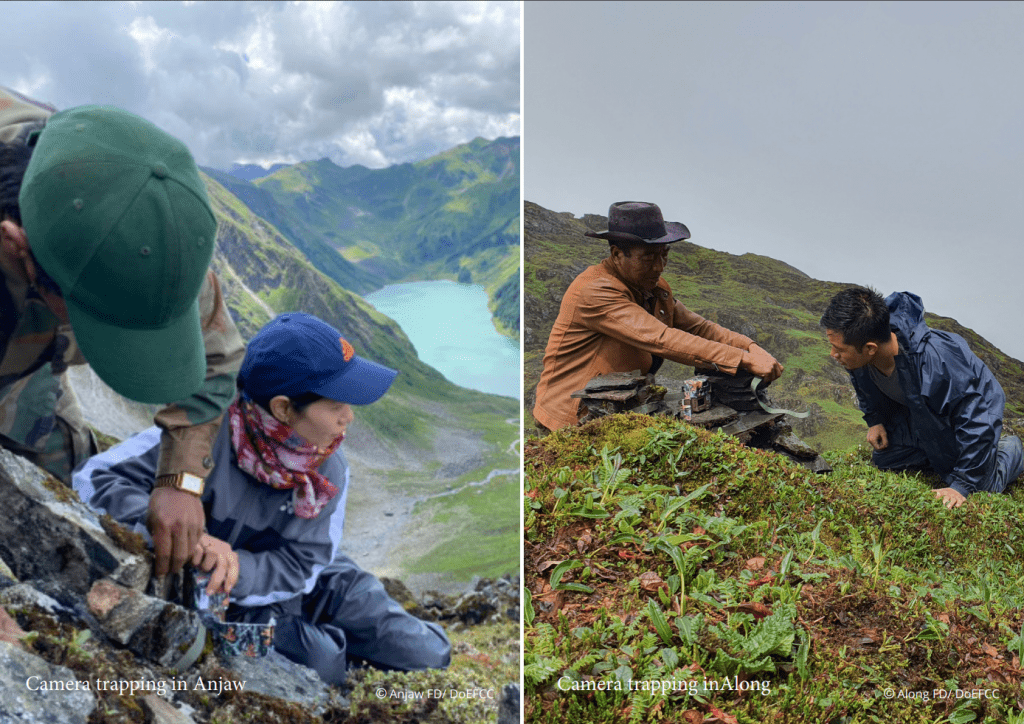
TRAINING THE FRONTLINE
The project also invested significantly in capacity-building efforts. Forest department personnel, local volunteers, and citizen scientists participated in training workshops across 11 forest divisions. These sessions covered essential skills, from camera trap setup and GPS navigation to identifying snow leopard signs and conducting wildlife assessments. By equipping local stakeholders with the knowledge and tools to monitor snow leopards, Arunachal Pradesh has laid a solid foundation for a long-term conservation strategy that relies on continuous data collection and community involvement.
THE ROAD TO SUSTAINABLE CONSERVATION
While the population estimate of 36 snow leopards is an encouraging milestone, there remains much work to be done. Establishing a robust long-term monitoring plan for the species is essential. Continued surveillance using advanced tools like Spatially Explicit Capture-Recapture (SECR) models can provide more detailed insights into population dynamics, enabling conservationists to respond effectively to emerging threats. Collaborative efforts with local communities are equally vital.
As the apex predator of the Eastern Himalayas, the snow leopard is integral to the health of this fragile ecosystem. Protecting this “ghost of the mountains” requires a delicate balance between conservation goals and the needs of the local population. Through innovative research, committed conservation policies, and meaningful community partnerships, Arunachal Pradesh is setting a precedent for safeguarding one of the world’s most endangered and mysterious big cats.





